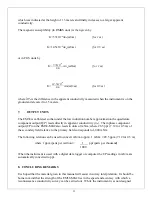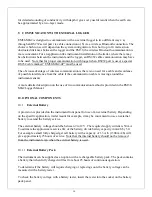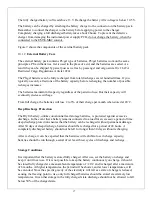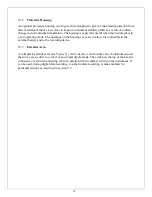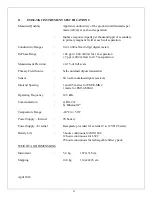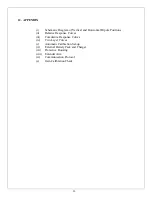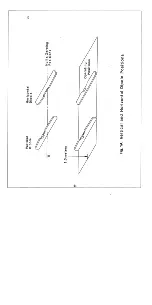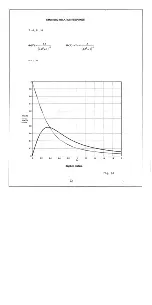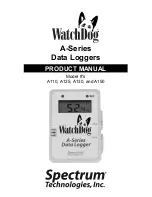
8
An example will help to illustrate this procedure. Suppose that with the instrument at 1.5 m
height the meter reads 12 mS/m in the horizontal dipole mode and 35 mS/m in the vertical dipole
mode.
Then
H = 12 mS/m
V = 35 mS/m
and we calculate
C = 35-2x12 = +11 mS/m
With the instrument at 1.5 meters and in the horizontal dipole mode (and thus still reading 12
mS/m) we now adjust the Q/P Zero to increase the meter reading by 11 mS/m and thus make the
new reading H = H+C = 12+11 = 23 mS/m. If we rotate the instrument to the vertical dipole
mode it will now read 46 mS/m (which is twice 23) since the 35 mS/m has also been increased
by 11 mS/m. The zero is correctly set.
Again, suppose that the readings are
H = 14 mS/m
V = 16 mS/m
we calculate
C = 16-2x14 = -12
and with the instrument at 1.5 meters height and in the horizontal dipole mode we now adjust the
Q/P Zero so as to reduce the horizontal dipole reading by 12 i.e., from 14 to 2, whereupon when
we rotate the instrument to the vertical dipole mode it will read 16-12=4, which is twice 2.
Again the zero is correctly set.
It was stated at the introduction to this section that this adjustment should be carried out at the
first survey station at the start of each day. Suppose that this site happens to be a region of very
high conductivity, say 1,000 mS/m to take an extreme example. If the conductivity is uniform
with depth at an instrument height of 1.5 meters it can be shown that the correct value of V will
be 100 mS/m and of H 53 mS/m for the 1 m coil separation. The accuracy of the zero setting
will be for 1 m coil separation, of the order of 6 mS/m and less for 0.5 m coil separation. This is
perfectly adequate for regions where the ground conductivity is 1,000 mS/m, but if the
conductivity falls to a few tens of mS/m an error of 6 mS/m in the zero setting would become
very serious. A small change in the zero setting will have negligible effect on the accuracy of
the previous high conductivity readings and will greatly improve the accuracy in low
conductivity areas.
In setting the zero, the operator will occasionally find that, on rotating the EM38-MK2 from the
horizontal dipole position where he got H to the vertical dipole mode to get V the meter reading
does not change, i.e., V=H. The answer to this puzzle is that he is standing over ground that is so
resistive that at 1.5 meters height the EM38 no longer responds to the conductivity. The
procedure outlined above still works however; now C=V-2H = -H, so that he will adjust the Q/P
zero control to reduce the meter reading by H which, of course, adjusts it to read H =0. Rotating
the instrument will give V =0 as well.
Summary of Contents for EM38-MK2
Page 7: ...5 Fig A...
Page 23: ......
Page 24: ......
Page 25: ......
Page 26: ......
Page 27: ......
Page 28: ......
Page 29: ......
Page 30: ......
Page 31: ......
Page 32: ......
Page 33: ......
Page 34: ......
Page 35: ......
Page 36: ...34...
Page 37: ...35...
Page 38: ...36...
Page 39: ...37...
Page 44: ...42...

















